Dragon fruit (Hylocereus spp.), also known as pitaya, is a tropical cactus prized for its striking appearance, delicious fruit, and high nutritional value. While the plant can grow naturally as a sprawling cactus, trellising provides structural support, maximizes fruit production, and simplifies maintenance and harvesting. Proper trellising is especially essential in commercial cultivation and backyard gardens. This guide provides a comprehensive, step-by-step approach to trellising dragon fruit plants, covering plant selection, support systems, planting, training, pruning, and maintenance.
1. Why Trellising Dragon Fruit is Important
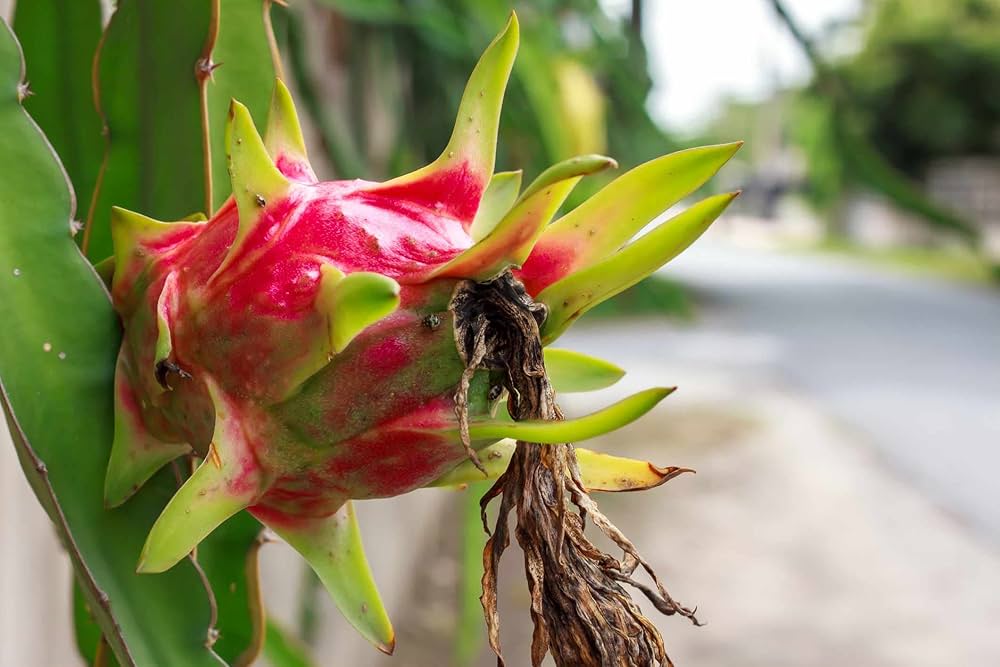
Trellising dragon fruit plants offers multiple benefits:
- Structural Support: Prevents the cactus from collapsing under its own weight as it grows vertically and spreads laterally.
- Increased Sunlight Exposure: Vertical growth ensures better light penetration for all stems, promoting healthy growth and flowering.
- Improved Air Circulation: Reduces risk of fungal diseases and pest infestations by allowing better airflow.
- Ease of Harvesting: Elevated stems make fruit collection more convenient and reduce damage.
- Space Efficiency: Vertical growth saves space, especially in backyard or commercial gardens.
Without trellising, dragon fruit plants may sprawl uncontrollably, become prone to pests, and produce fewer flowers and fruits.
2. Choosing the Right Dragon Fruit Variety
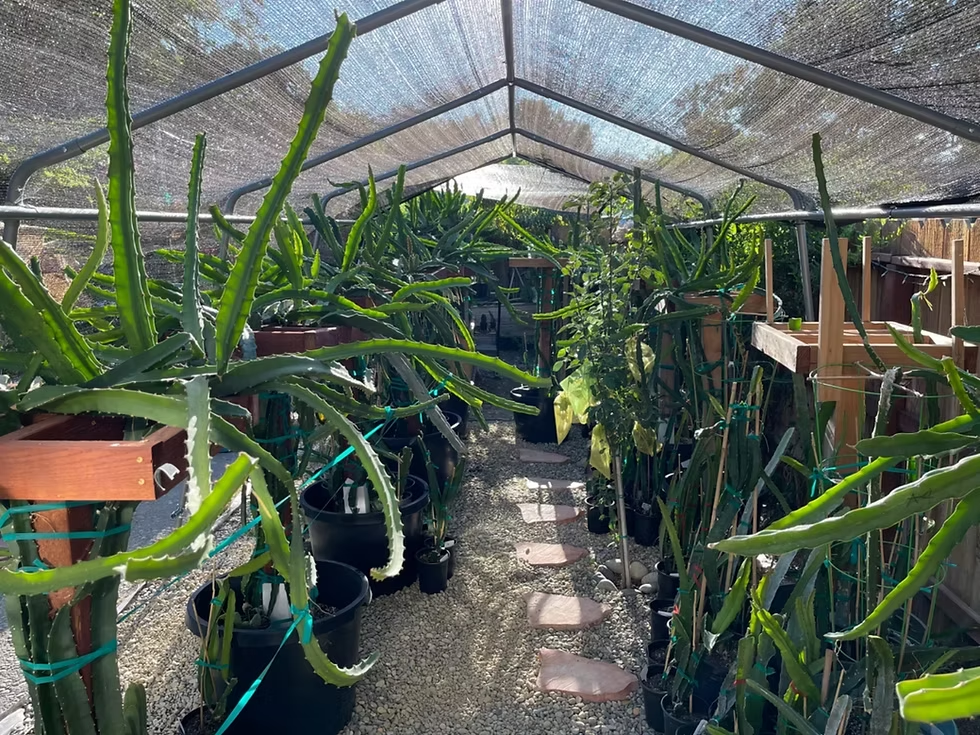
Before trellising, select a variety suited to your climate and purpose:
- Hylocereus undatus (White Flesh): Most widely grown; sweet flavor and high yield.
- Hylocereus costaricensis (Red Flesh): Vivid red flesh; popular in commercial markets.
- Hylocereus megalanthus (Yellow Skin): Rare variety; high market demand due to unique appearance.
Tip: Choose disease-resistant varieties for easier maintenance and higher productivity.
3. Selecting a Trellising System
Several trellising methods are commonly used:
A. Single-Post Trellis
- Uses a single sturdy post per plant.
- Suitable for small gardens or low-density planting.
- Simple and cost-effective.
B. T-Shaped or Cross Arm Trellis
- A vertical post with horizontal arms forming a “T” shape.
- Provides multiple points for stems to grow along.
- Ideal for backyard gardens.
C. Concrete or Wooden Pillars with Wire
- Stronger and more durable for commercial farms.
- Wires or metal frames support climbing stems.
- Suitable for high-density planting.
D. Fence or Wall Trellis
- Uses existing fences or walls for support.
- Space-saving for urban gardens.
Tip: Choose trellis materials that are weather-resistant and sturdy enough to support mature plants.
4. Preparing the Site and Planting
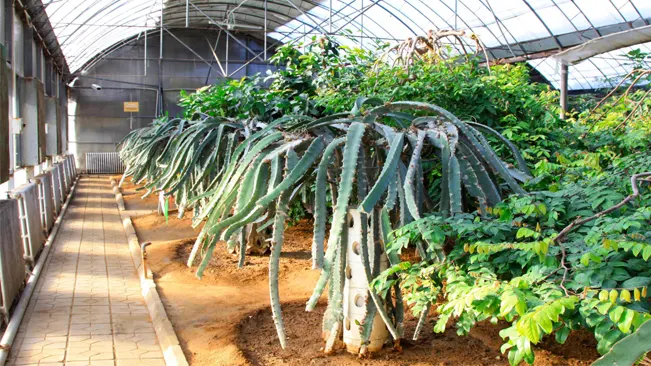
Step 1: Soil Preparation
- Dragon fruit prefers well-draining soil rich in organic matter.
- Ideal pH: 6–7.
- Mix compost or aged manure into soil to improve fertility.
Step 2: Planting
- Space plants 2–3 meters apart to allow adequate growth.
- Dig holes deep enough to accommodate the root ball.
- Place the plant and backfill with soil, pressing gently to secure roots.
- Water thoroughly after planting.
Step 3: Installing Posts
- Use posts 1.5–2 meters high.
- Bury posts 50–70 cm deep for stability.
- Space posts according to the chosen trellis system.
5. Step-by-Step Trellising Process
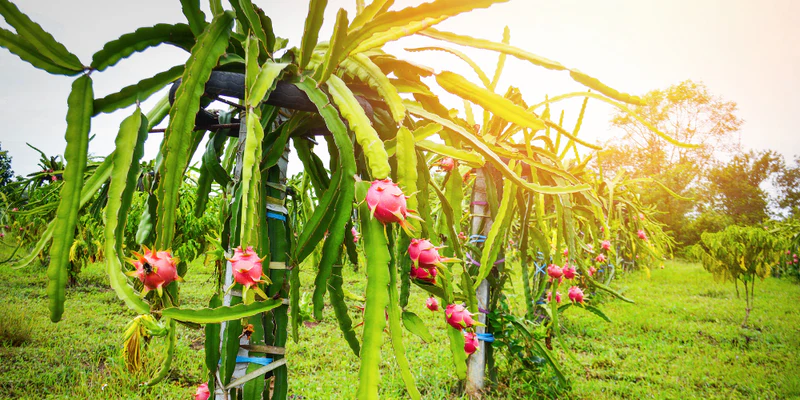
Step 1: Initial Training
- Gently tie the young stems to the post using soft ties or cloth strips.
- Avoid tying too tightly, as stems will expand with growth.
Step 2: Vertical Growth
- Train main stems upward along the post.
- Allow lateral branches to grow outward.
- Use additional ties or clips to secure lateral stems to horizontal arms or wires.
Step 3: Pruning and Thinning
- Remove damaged, weak, or diseased stems.
- Thin excess lateral branches to improve light exposure and airflow.
- Pinch off growing tips if needed to encourage bushier growth.
Step 4: Flowering and Fruiting
- Dragon fruit typically flowers after 6–12 months.
- Ensure flowers are exposed to sunlight for optimal fruit set.
- Use vertical and horizontal ties to support heavy fruits and prevent breakage.
Step 5: Harvesting
- Mature fruits are 25–30 cm long and change color depending on the variety.
- Harvest by cutting the fruit with a sharp knife while leaving the stem intact.
- Use the trellis to reach fruits easily and avoid damage.
6. Maintenance and Care
A. Watering
- Water young plants every 3–4 days.
- Reduce watering once established; allow soil to dry slightly between watering.
- Avoid waterlogging to prevent root rot.
B. Fertilization
- Apply balanced NPK fertilizer every 2–3 months.
- Use organic compost or foliar sprays for additional nutrition.
- Increase potassium during flowering to boost fruit quality.
C. Pest and Disease Management
- Common pests: aphids, mealybugs, and scale insects.
- Fungal infections: anthracnose, stem rot, and leaf spots.
- Solution: Regular inspection, pruning of infected stems, and using organic pesticides if needed.
D. Trellis Inspection
- Check posts and ties regularly for stability.
- Replace broken posts or ties promptly.
- Ensure the trellis can support heavy stems and fruits.
7. Advantages of Trellising in Dragon Fruit Cultivation
- Higher Yield: Vertical growth allows more flowers and fruits to develop.
- Improved Fruit Quality: Better sunlight and airflow enhance sweetness and color.
- Disease Prevention: Reduces fungal and bacterial infections.
- Easy Harvesting: Fruits are accessible without damaging stems.
- Space Optimization: Trellises allow more plants per area without overcrowding.
8. Common Mistakes to Avoid
- Weak or Improper Posts: Leads to plant collapse under heavy fruit load.
- Tying Too Tightly: Can damage stems and restrict growth.
- Neglecting Pruning: Causes overcrowded branches, reducing sunlight exposure.
- Ignoring Pests: Leads to infestations and reduced yield.
- Overwatering: Increases the risk of root and stem rot.
9. Conclusion
Trellising dragon fruit plants is essential for successful cultivation, whether in backyard gardens or commercial farms. By following this step-by-step guide, growers can ensure strong vertical growth, higher yields, improved fruit quality, and easier maintenance. Choosing the right variety, preparing the soil, installing a sturdy trellis, training stems, and practicing proper pruning and care are key to thriving dragon fruit plants.
With careful attention to watering, fertilization, pest management, and trellis maintenance, dragon fruit growers can enjoy healthy, high-yielding plants that produce abundant, market-ready fruits. Trellising not only supports the plant physically but also optimizes space, light exposure, and airflow, making it an indispensable technique in modern dragon fruit cultivation.
Whether for personal consumption or commercial purposes, trellising ensures that your dragon fruit garden is productive, sustainable, and visually appealing throughout the growing season.
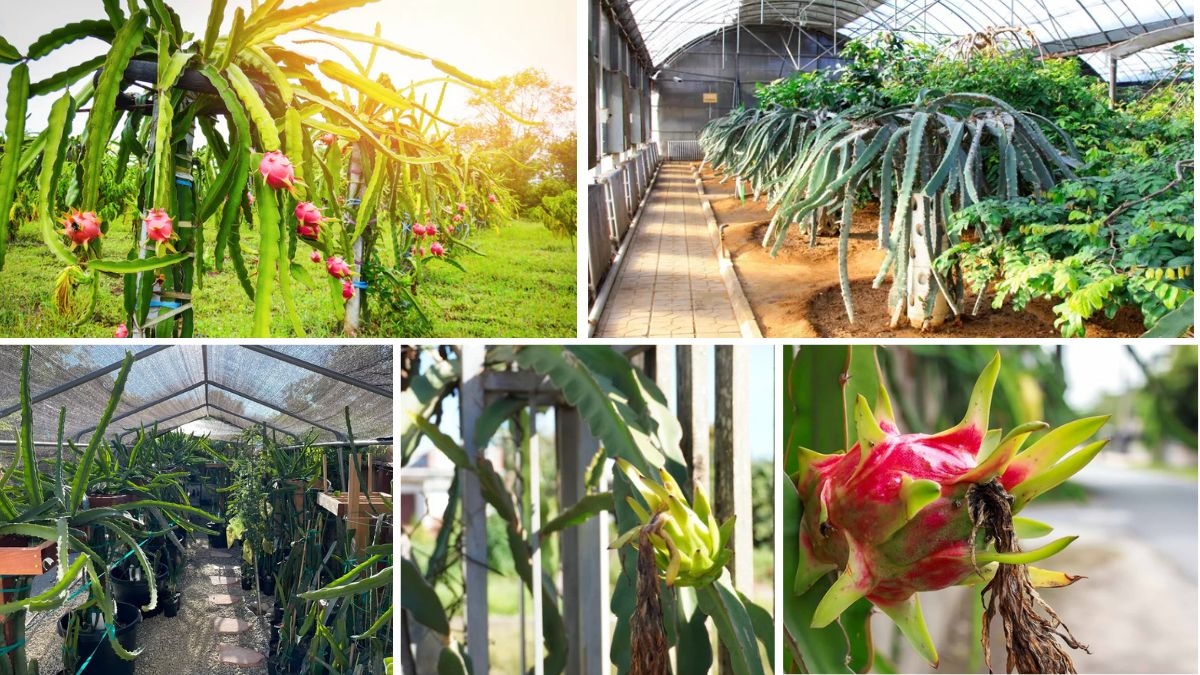





Leave A Comment